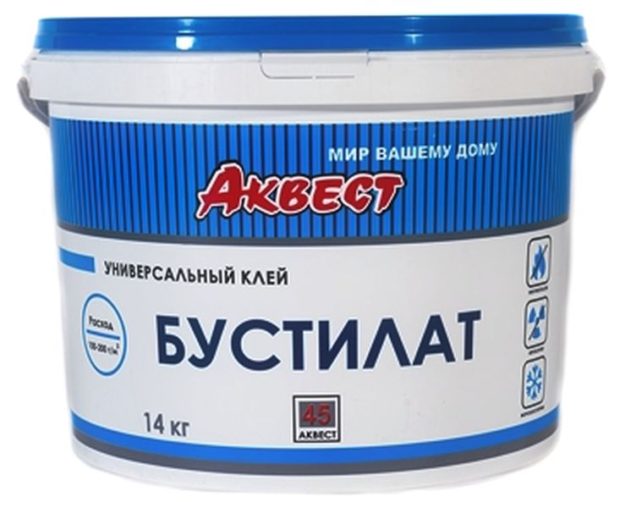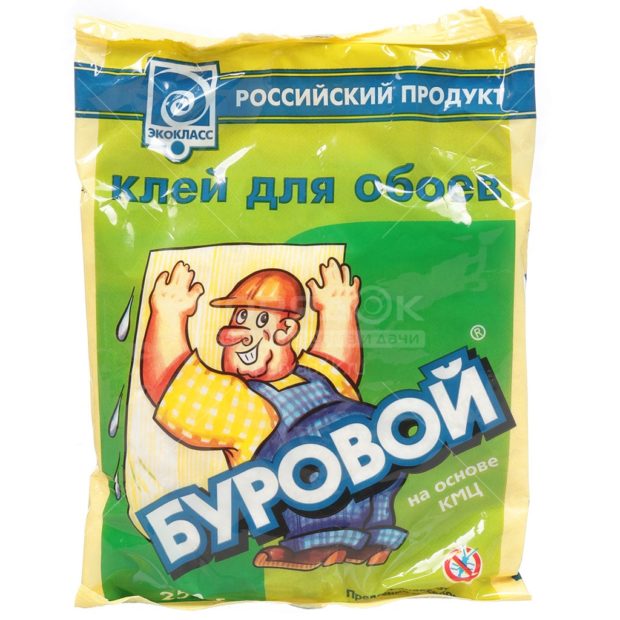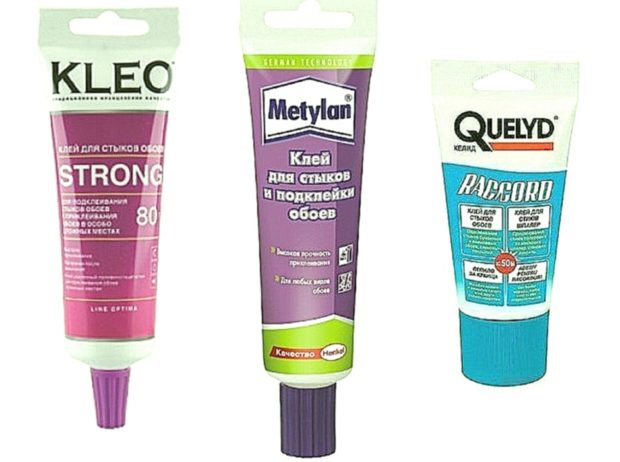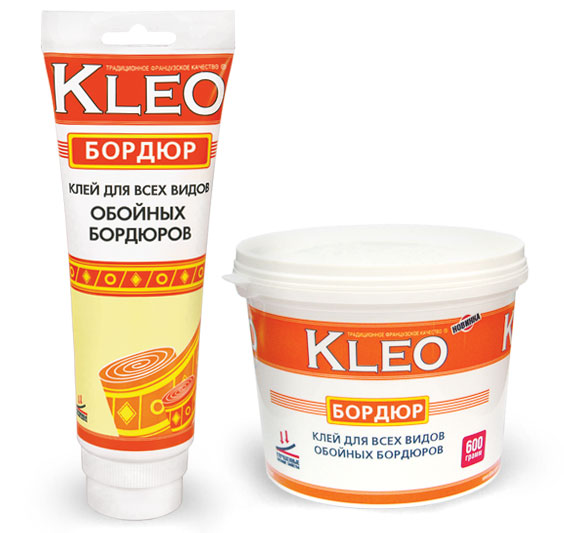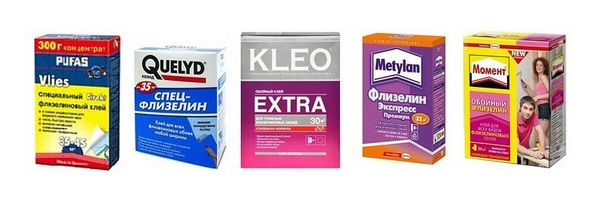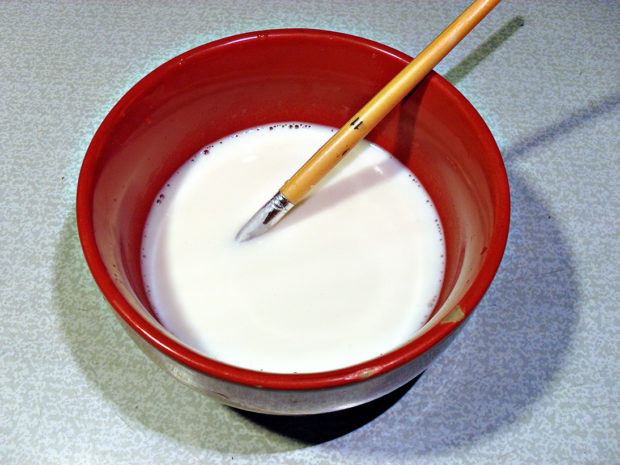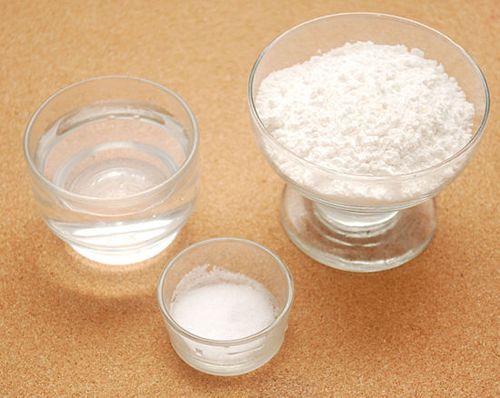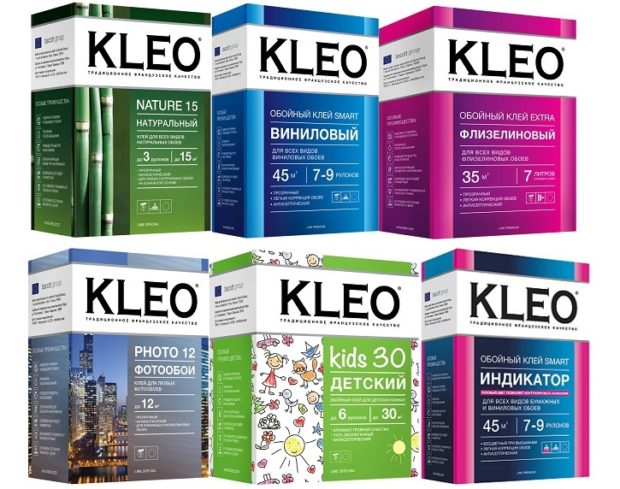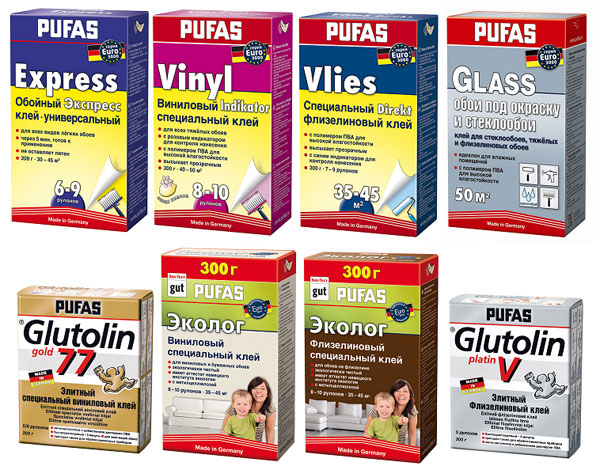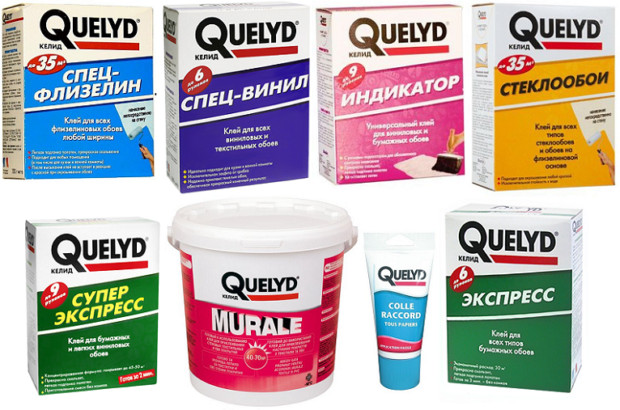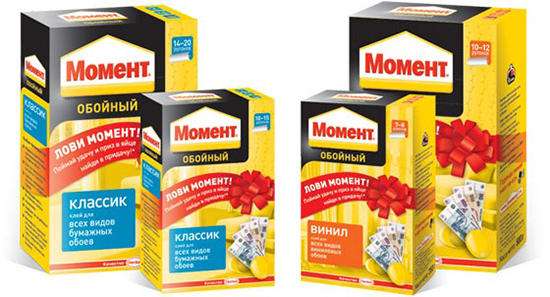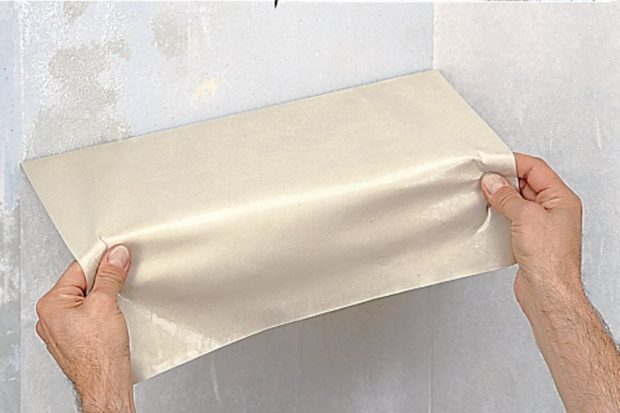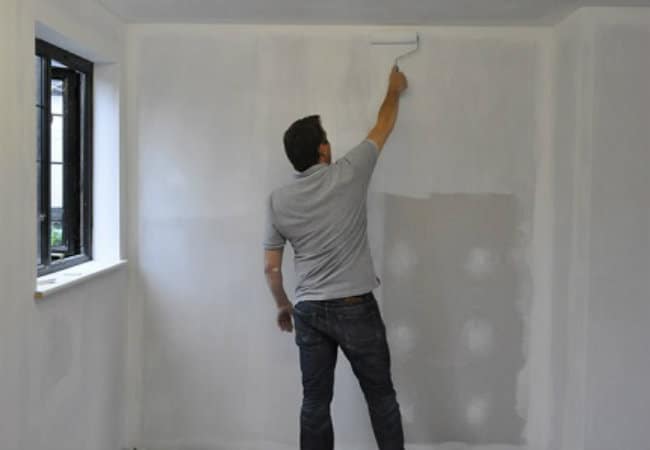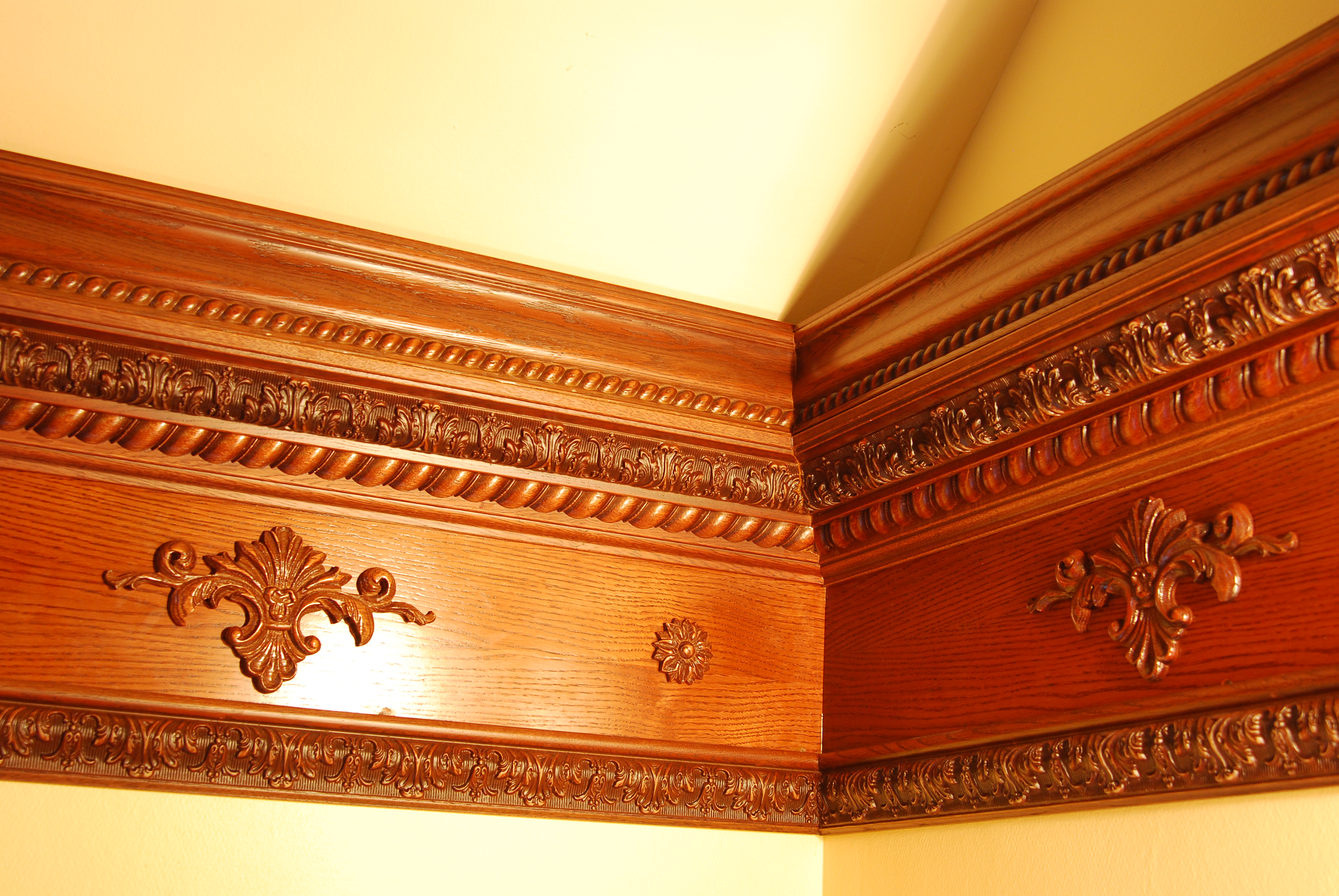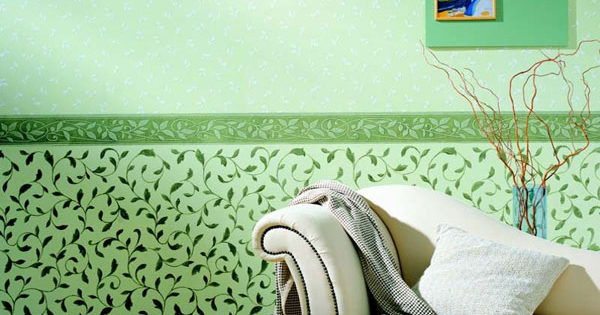7 Tips for Choosing the Best Wallpaper Adhesive
Wallpapering - a simple matter. This "procedure" is so popular that many consider themselves to be true professionals in it. But even such professionals sometimes have incidents in the form of peeled wallpaper, stains or an unpleasant odor. The reason lies on the surface - a violation of the technology of gluing. In this matter, it is important not only to properly prepare the walls, but also to find the right glue. As statistics show, it is with the latter that many prefer not to bother, buying the first glue or universal glue. Lucky if the choice was intuitively made correctly. And if not? All the work in vain! Sorted out which wallpaper glue is better to choosewhat distinguishes a universal composition from a special one, which manufacturers can be trusted, and how to prepare wallpaper glue yourself.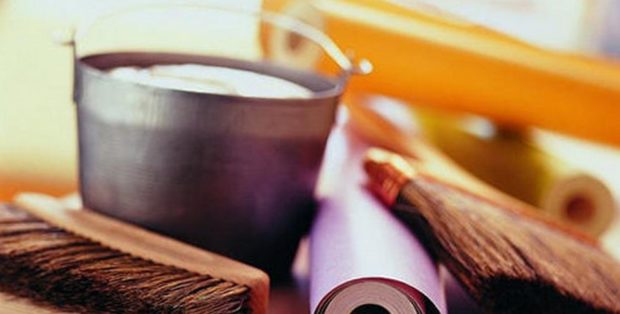
No. 1. What to consider when choosing glue for wallpaper?
To put it mildly, there are many different adhesive compositions in stores. There are adhesives that need to be bred from powder, there are ready-made compositions, there is even wallpaper with already applied glue (self-adhesive wallpaper) Glues differ in composition. Some will stick the wallpaper so that you want to - you won’t tear it off, but at the same time they will smell and poison the air, others will be environmentally friendly, but they will not be able to hold the canvas normally. In order not to get pierced when choosing, always consider such factors:
- wall and wallpaper material;
- wallpaper weight;
- the purpose of the room (what humidity and temperature will be in it);
- primary and final adhesion;
- mobility, which depends on whether you can slightly adjust the position of the sheet on the wall;
- environmental Safety;
- the presence of antifungal components in the composition;
- moisture resistance;
- the pH should be in the range of 6-7, otherwise yellow spots may appear on light wallpaper;
- durability;
- the ability to restore adhesive properties after wetting;
- glue consumption.
All these properties directly depend on the composition of the adhesive, so immediately proceed to its study.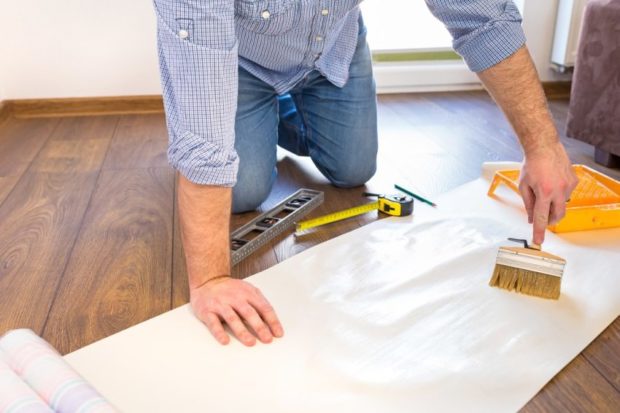
No. 2. The composition of the adhesive for wallpaper
All adhesives have approximately the same composition - a difference in characteristics is achieved by changing the proportions.
The main components of wallpaper glue:
- base, 50-95%. These are cellulose derivatives: methyl cellulose (MC), carboxyl methyl cellulose (CMC), or modified hydroxypropyl starch / carbomethyl starch starches (HPA / CMC);
- polyvinyl acetate (PVA), 5-50%. Increases adhesion of glue and its moisture resistance;
- fungicides and antiseptics, up to 3.4%. Protect from mold and mildew.
Always pay attention to the composition and ratio of components in it, since the properties of the adhesive depend on this.
Universal adhesives usually consist of 97% of the base, have a low content antifungal supplements. Adhesives for heavy coatings 75% consist of a base and 23-25% of PVA, which will provide normal adhesion to the wall, the proportion of antiseptic additives is 0-3%. For the heaviest coatings (on a textile basis, cullet) make adhesives that consist of an equal amount of base and PVA, and some antiseptics reach 3.4%.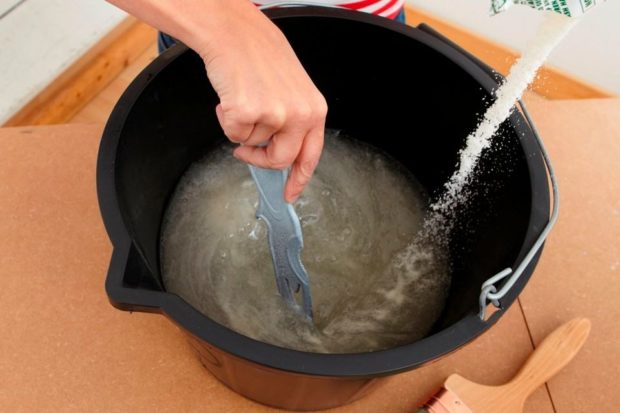
Pay particular attention to what type of base is used. If it is a modified starch, then only paper and vinyl wallpapers can be glued with this glue.Carboxymethyl cellulose (CMC) is considered to be the chain itself; such adhesives are suitable for use on plastered and plastered surfaces. For gluing on a painted wall, it is better to use glue based on methyl cellulose (MC) with a decent proportion of PVA.
When sticking wallpaper in the bathroom and on the kitchen be sure to use glue with the maximum content of bactericidal and fungicidal additives.
No. 3. Types of adhesive for wallpaper for the purpose
All adhesive compositions can be divided into:
- universal;
- special, narrowly targeted.
Universal adhesivessupposedly suitable for all types of wallpapers. When working with them, they follow the principle: the heavier the canvas, the thicker it is necessary to knead the composition. You can use universal glue either from hopelessness, or with light wallpaper. In other cases, it is better to take special compoundswhich are intended for a certain type of wall-paper (and sometimes also for certain service conditions). Often, the manufacturer of the wallpaper on the packaging indicates the recommended adhesive (usually this happens with photo wallpaper).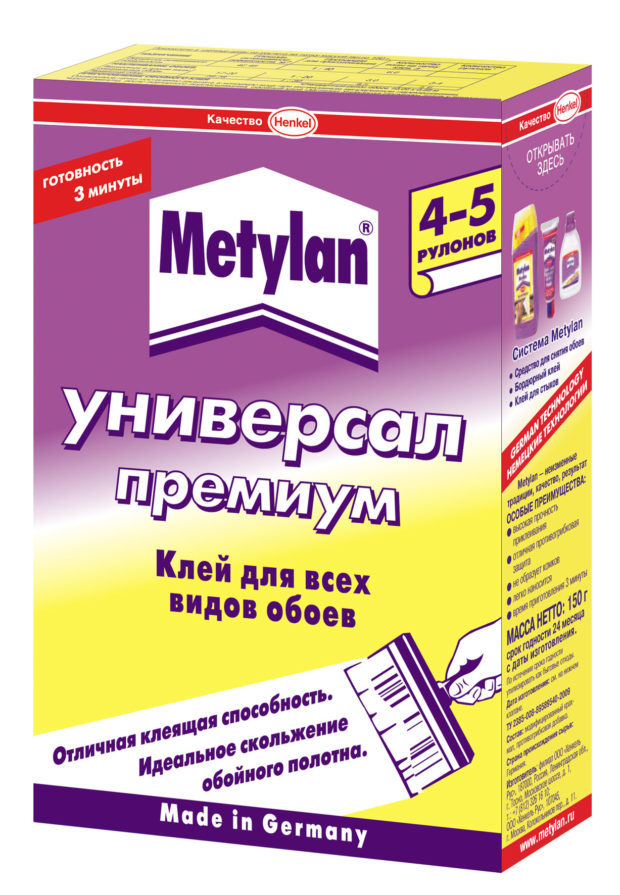
Consider some popular adhesive compositions found on store shelves:
- universal PVA widely used in repair and decoration work, suitable for paper sticking and vinyl wallpaper. The composition is distinguished by decent frost resistance, moisture resistance, adhesion and fire safety. There are no toxic substances in the composition, so the glue is completely safe;
- bustilate It consists of CMC, latex, chalk, water and additives; it differs in white or grayish color, but upon drying it becomes transparent. Moisture-resistant, has good mobility, fireproof, economical in consumption, does not yellowness on the canvas, environmentally friendly. Ideal for paper wallpapers;

- drill glue based on CMC, it is pinkish, odorless, environmentally friendly;

- adhesive for vinyl wallpaper They are produced on the basis of MC, cheaper analogues are produced on the basis of KMK / GPC, but the result with them will be doubtful. Adhesives based on MC have excellent adhesion, frost resistance, penetration, durability and repeated resumption of adhesion;
- glue for non-woven wallpaper applied to the wall, contains a large number of antiseptic additives;
- glue for textile wallpaper and glass wallpaper possesses increased strength, the ability to withstand moisture, is sold, as a rule, already in finished form.
There is another category auxiliary adhesives:
- joint glue It is used for gluing the edges of paintings, as well as seams in places of gaps. The composition has a white color, after drying it becomes transparent, suitable for all types of wallpaper;

- acrylic adhesive used for mounting decorative border tapes on any basis. The glue has high strength and at the same time provides good glide, which simplifies fitting.

However, about expediency to use auxiliary compositions disputes are still ongoing. The border can be glued with PVA glue or the same composition that was used when installing the wallpaper. Joints will not peel off at all if the technology for installing wallpaper is not violated. In extreme cases, you can glue them with bustilate, which after drying will become transparent.
Number 4. Take ready or breed with water?
Wallpaper glue can be sold in two formats:
- glue, ready to drawing;
- powder to be diluted with water.
Use finished composition it is most convenient, since no time is spent, albeit small, to study the instructions for preparing the glue and directly to the preparation itself. Ready-made glue is sold in buckets, it costs a little more than dry glue. When buying, carefully monitor the expiration date, since in the liquid state the glue can spend a relatively short time.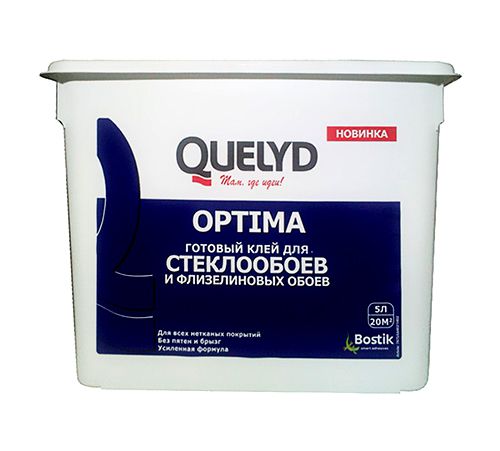
Dilute the dry mixture with water - one of the simplest tasks in repair.It is enough to follow the instructions and add a strictly defined amount of water, mix thoroughly and let the glue “infuse” for some time, unless otherwise indicated on the package. In general, just follow the instructions. This type of glue is most popular.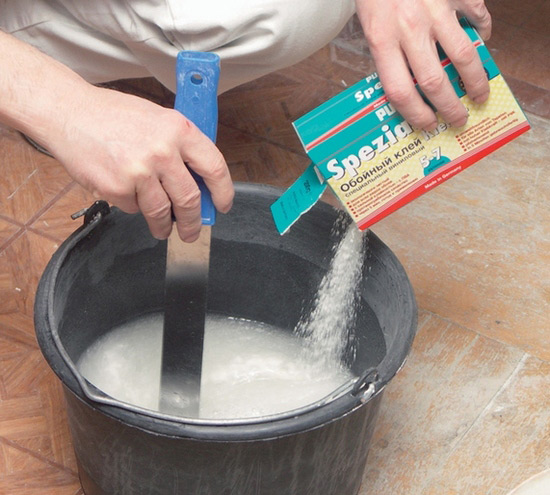
For beginners, there are adhesives that are painted in blue or pink.. This is necessary so that you do not miss a centimeter during wallpapering. After drying, the composition becomes transparent. Such glues are more expensive than usual, in demand, but not all beginners realize that there is no sense in such a colored glue. The fact is that the canvas of the wallpaper when applying ordinary glue becomes a little darker, and the unpainted areas are easy to determine without indication.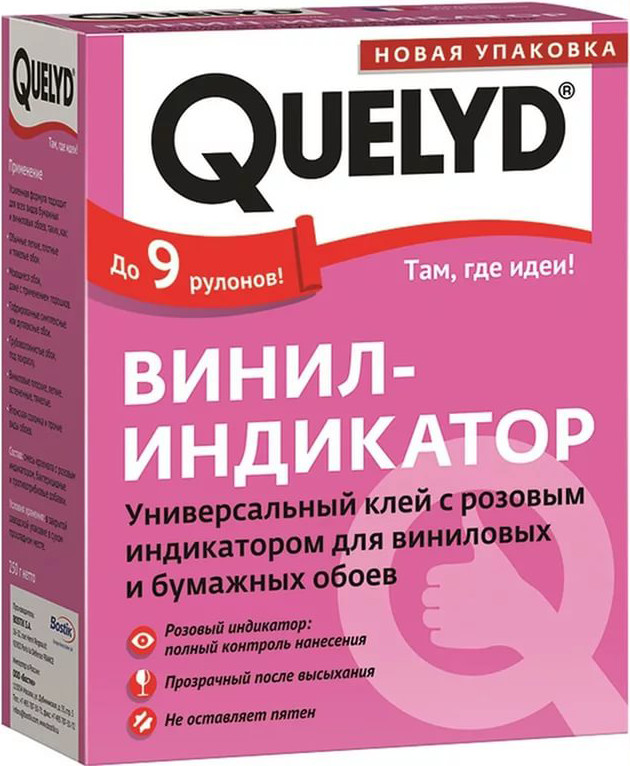
They deserve special attention Wallpaper that already has a layer of glue. To activate it, you need to peel off the protective film and / or moisten a little. There is no need to take a bucket, spread glue, use rollers and wait for the glue to dry. But self-adhesive wallpapers are more expensive than usual and very thin, so the surface will have to be prepared especially carefully.
No. 5. Type of wallpaper and type of glue
The easiest way is just to take the glue that the manufacturer indicated on the packaging of the wallpaper. And what if there are compositions no worse (or even better!), But much cheaper. Do not blindly trust the recommendations, because you can turn on your head yourself and choose the right glue for the wallpaper, based on the type of the latter.
So, which glue for wallpaper is better to choose, taking into account the material of the wallpaper:
- paper wallpaper differ in the minimum oar, therefore, for their gluing, a composition based on CMC, universal glue, as well as ordinary PVA, drilling glue and even self-prepared paste are suitable;
- vinyl wallpapers a little heavier than paper ones, but according to the principle of gluing the same - the glue is applied to the canvas, and not to the wall. Vinyl does not allow air to pass through, which affects the drying speed of the adhesive, so do not use homemade paste in this case - only special one based on MC is suitable. In extreme cases, you can use universal glue, but it is necessary to prepare a solution of maximum concentration. If the basis of the wallpaper is non-woven, then it is better to take the composition for non-woven wallpaper;
- non-woven wallpaper require the non-alternative use of special glue, which is applied to the wall, so that the expense of funds is minimal. The universal composition and paste is better not to use;
- fabric and cullets are glued to especially durable special compounds;
- photo wallpaper often get a self-adhesive base, otherwise use glue for vinyl wallpaper.

No. 6. How to make wallpaper glue?
Home-made adhesives have almost been replaced by home-made adhesives, but the recipes have not been forgotten and are still used by the people. Often such compositions are used by older people. In some cases, it is indeed better to make a paste yourself than to buy a store composition. For example, when you need to make a simple repair in a country house and glue the cheapest paper wallpaper, or when the store staff was literally not enough for one roll.
It is very easy to prepare a paste.:
- in a large container (you can take a bucket) water boils;
- flour is mixed with a small amount of water in a separate small container. The solution should get a consistency of thick sour cream and be without lumps;
- for 1 liter of water (the one that boils in a bucket) take 6 tbsp. tablespoons of flour;
- when the water boils, gently pour the flour mixture into it, stirring actively while preventing the formation of lumps. If they still appeared, then you have to strain the paste through a sieve;
- when the paste cools down, you can start gluing. 1 liter of such glue is enough on average for sticking 2-3 rolls of wallpaper.

Instead of flour, you can use starch. The proportion will be somewhat different: 1 kg of potato starch will go to 10 liters of water. The principle of preparation is the same.First, starch is poured with a small amount of warm water, mixed, and added in a thin stream to boiling water. The composition is boiled a little, filtered and left to cool. Dry wood glue can be added to the mass, 100 g will be enough. It will improve the stickiness. The shelf life of the formulations based on flour and starch is one day, so it is unnecessary to cook them for the future.
Some craftsmen even prepare PVA glue, although in stores it is quite inexpensive. Nevertheless, the situations are different, so in which case you can refer to the following recipe:
- 5 g of photographic gelatin is poured into 1 liter of distilled water and left to swell for 1 day;
- put the resulting substance in a water bath, add 100 g of flour and mix thoroughly so that the composition becomes homogeneous;
- after 5 minutes add 20 ml of ethyl alcohol and 4 g of glycerol;
- the mixture is removed from the water bath, cooled and used as intended.

PVA glue, by the way, is used not only when you need to stick something. Sometimes it is diluted with water and used as primers - there is a budget alternative to ready-made formulations.
Number 7. Top Wallpaper Adhesive Manufacturers
If you don’t rely on folk recipes and trust only industrially made adhesives, then before going to a hardware store you need to know the situation on the market. On the shelves you can see almost the same compositions, but how to determine which glue for wallpaper is better? In this case, one should not rely on intuition, but on the manufacturer’s reputation and reviews of its products.
Among the largest and most reliable manufacturers of wallpaper glue, it is worth highlighting:
- Kleo - French brand adhesives. The assortment contains compositions for any type of wallpaper, as well as universal glue. Also produced for beginners (with indicator), ready-made glue and glue for decorating children's rooms;

- Methylan - German adhesives, which are distinguished by their chic quality, large assortment and high price. It was this company that first began to produce pink adhesives. Today, the manufacturer offers compositions for all types of wallpapers, universal adhesives, as well as glue for wallpaper joints;
- PUFAS - Another giant of the market. The German company produces compositions for different types of wallpaper, including for velor, metallized and wood fiber based. There is a series of compounds with increased moisture resistance, as well as a number of completely environmentally friendly compounds;

- Quelyd - French adhesives, presented in a wide range. Powder in unopened packaging has an unlimited service life. In addition to a number of special compounds, there is glue with an indicator, adhesives with fungicidal properties and glue for processing joints;

- Semin - A French company with several factories in Russia. The assortment is not as wide as that of competitors, but the quality is on top, and the price is slightly lower;
- Exclusive - English compositions with increased strength and moisture resistance are well suited for heavy velor and metal wallpapers;
- ACM - Italian adhesives, represented by universal and specialized compounds, are characterized by a reduced amount of volatile substances;
- Bostik and Axton - French compositions that are well known to the domestic buyer for their high quality;
- "Moment" - German brand adhesives, which are now available at domestic factories. There are universal compounds with fungicides, adhesives for non-woven, vinyl wallpapers, adhesives with indicator, adhesive for joints and high-strength adhesive;

- Quality - a domestic brand that produces several lines of adhesives of different price categories. The assortment has universal and special compounds;
- glues Oscar and Decoro also produced in Russia and are intended for heavy wallpaper.
Finally
When comparing various adhesives in the store, evaluate a parameter such as the flow rate of the mixture. Sometimes it is better to take a more expensive, but economical glue than cheap with high consumption. This is not an obvious savings.For bathrooms and kitchens, take moisture resistant glue with fungicidal additives. Follow the instructions clearly - this is a guarantee that the wallpaper will not peel off after a couple of months.

